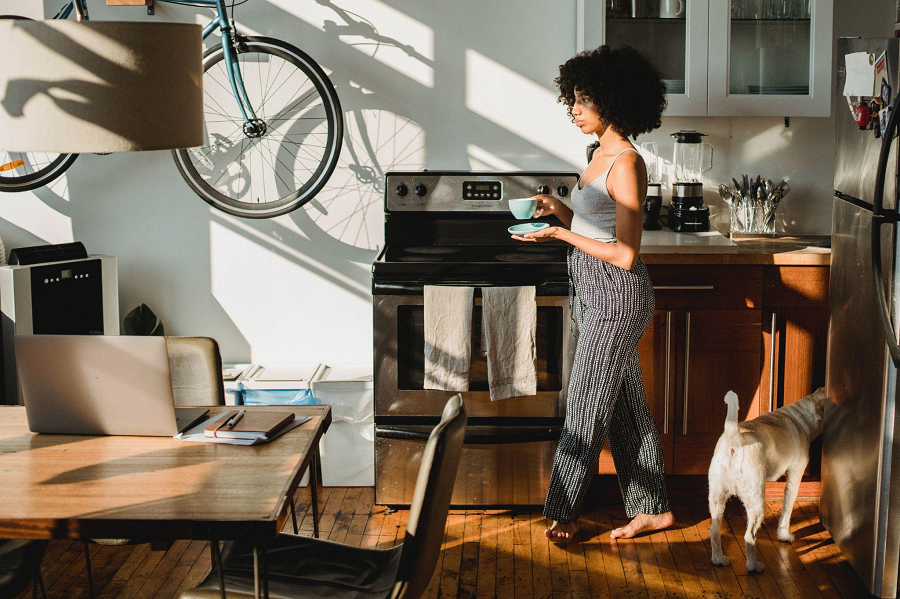Ensuring a Pet-Safe Household
Our pets often become beloved family members, bringing joy, companionship, and a hint of unpredictability into our lives. Just as we’d baby-proof a home for a toddler’s safety, it’s essential to ensure our homes are safe havens for our furry, feathered, or scaled friends.
From the kitchen to the garden, potential hazards lurk, but with awareness and proactive measures, we can create a pet-friendly environment.
So if you’re in the city and planning to get a puppy, let’s explore how to ensure a pet-safe household.
1. Beware of Toxic Foods and Plants
Foods: Several everyday foods can be toxic to pets, especially dogs and cats.
- Chocolate: Contains theobromine, which is toxic to dogs and cats.
- Grapes & Raisins: Even in small amounts, these can cause kidney failure in dogs.
- Onions & Garlic: These can lead to anaemia in dogs and cats.
- Xylitol: An artificial sweetener, it can cause insulin release in most pets, leading to liver failure.
Plants: Many household plants are toxic to pets when ingested.
- Lilies: Highly toxic to cats, leading to kidney failure.
- Poinsettias: Can cause mild irritation to the mouth and stomach of dogs and cats.
- Sago Palms: Extremely toxic, especially to dogs, and can cause vomiting, diarrhoea, and liver failure.
2. Safe Storage Solutions
Just as you would with a child, ensure chemicals, medicines, and even certain cosmetics are stored out of reach of curious pets.
- Use childproof latches to prevent pets from opening cabinets.
- Store medications in a secure cabinet or drawer.
- Make sure indoor bins are equipped with tightly secured lids to prevent pets from accessing and consuming harmful items.
3. Eliminate Choking Hazards
Small items left around the house can become potential choking hazards or cause intestinal blockages.
- Store small items like hair ties, rubber bands, and children’s toys out of pets’ reach.
- Regularly check pet toys for signs of wear. Discard toys that are torn or have pieces that could be swallowed.
- Beware of small items that fall on the floor, such as coins, buttons, and jewellery.
4. Creating a Safe Outdoor Space
If you have an outdoor space where your pet plays, it’s essential to ensure it’s secure and free from hazards.
- Fencing: Ensure fences are sturdy, tall enough, and lack gaps that a pet could squeeze through.
- Garden Chemicals: Herbicides, pesticides, and even some mulches can be harmful to pets.
- Open Water: If you have a pond or pool, ensure pets cannot fall in, or ensure they know how to get out safely.
5. Electrical and Heat Safety
Curious pets, especially kittens and puppies, might be tempted to play with electrical cords or get too close to heat sources.
- Use cord covers or protective wraps to prevent pets from chewing on them.
- Keep pets away from heaters, open fires, and hot surfaces. Use protective barriers if necessary.
- Always supervise pets around open flames, like candles.
6. Safe Spaces and Escape Routes
Ensuring your pet has a safe space to retreat to can prevent accidents and injuries.
- Invest in a comfortable kennel or crate as a sanctuary for your pet.
- For homes with multiple pets, ensure each has a separate space to eat, rest, and play to prevent territorial disputes.
- Always have an identification tag on your pet and consider microchipping in case they ever escape.
Conclusion
Creating a pet-safe household is an ongoing process, requiring regular checks and adjustments as your pet grows and explores. By staying informed and proactive, you can ensure your home remains a paradise for your pet, filled with fun, love, and most importantly, safety.
After all, our pets rely on us for their well-being, and with a few simple steps, we can ensure they live their happiest, healthiest lives by our sides.
